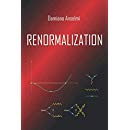Archive for September 2005
The infinite reduction of couplings is a tool to consistently renormalize a wide class of non-renormalizable theories with a reduced, eventually finite, set of independent couplings, and classify the non-renormalizable interactions. Several properties of the reduction of couplings, both in renormalizable and non-renormalizable theories, can be better appreciated working at the regularized level, using the dimensional-regularization technique. We show that, when suitable invertibility conditions are fulfilled, the reduction follows uniquely from the requirement that both the bare and renormalized reduction relations be analytic in $\varepsilon=D-d$, where $D$ and $d$ are the physical and continued spacetime dimensions, respectively. In practice, physically independent interactions are distinguished by relatively non-integer powers of epsilon. We discuss the main physical and mathematical properties of this criterion for the reduction and compare it with other equivalent criteria. The leading-log approximation is solved explicitly and contains sufficient information for the existence and uniqueness of the reduction to all orders.
J.High Energy Phys. 01 (2006) 077 | DOI: 10.1088/1126-6708/2006/01/077
arXiv: hep-th/0509196

 Quantum Gravity
Quantum Gravity 


